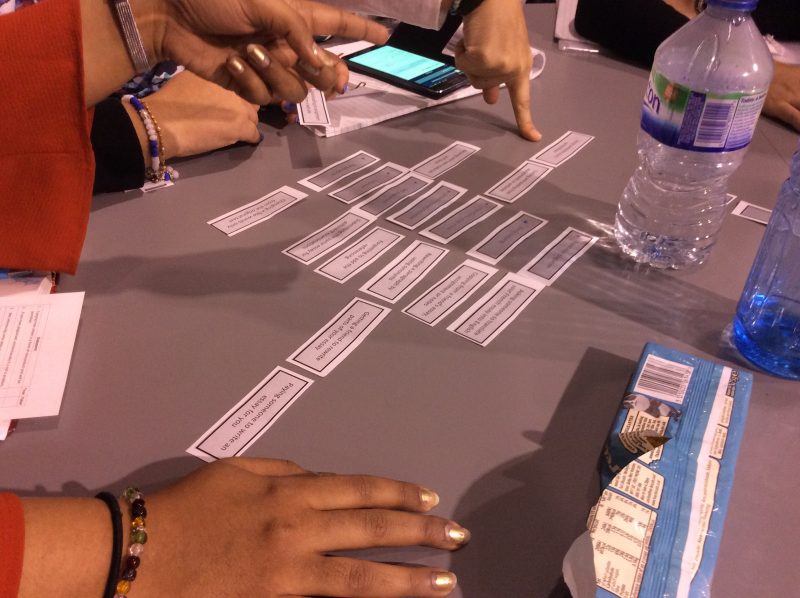 In a previous post I wrote about how important it is to avoid plagiarism and to submit an assignment that is truly your own. However, this was in a way assuming that you are able to identify what constitutes plagiarism and that plagiarism is intentional. The issues with plagiarism are however more difficult, S there are many types of plagiarism. The Epigeum online module “How to avoid plagiarism” is very good at providing basic information about how students may plagiarise unintentionally, as they think their collaboration with colleagues for example, is just that, collaboration to develop key ideas and understanding relating to a specific topic area.
In a previous post I wrote about how important it is to avoid plagiarism and to submit an assignment that is truly your own. However, this was in a way assuming that you are able to identify what constitutes plagiarism and that plagiarism is intentional. The issues with plagiarism are however more difficult, S there are many types of plagiarism. The Epigeum online module “How to avoid plagiarism” is very good at providing basic information about how students may plagiarise unintentionally, as they think their collaboration with colleagues for example, is just that, collaboration to develop key ideas and understanding relating to a specific topic area.
The reality of the matter is that irrespective of the types of plagiarism, ultimately plagiarism is a punishable offence. Therefore, it is a good idea to get fully acquainted with the different types of plagiarism in order to be able to effectively avoid difficult situations.
Direct copying:
This is probably the most obvious of all types of plagiarism, and refers to cutting and pasting from assignments or websites without crediting the author.
Paraphrasing:
Within a literature review for example you will be asked to synthesise ideas from the publications you have read. Sometimes though, students are merely rewriting paragraphs by using some synonyms. This is not a synthesis of ideas but is called paraphrasing and as such may constitute plagiarism. It is therefore best to either quote directly or reference the source with author name, year of publication and page numbers or to rephrase and rewrite the entire section in your own words and then crediting the author with name and year of publication for the ideas.
Self-plagiarism:
The most extreme case of self-plagiarism is a case where a student submits the same assignment as an examination piece for two different modules or courses, for example. However, there are also less extreme cases of self-plagiarism. For example, where a student cuts and pastes sections from previous work without highlighting that these sections are indeed reused. During the course of your studies you will quite naturally find yourself revisiting your own assignments and reworking your own ideas. Mostly, this demonstrates your learning and is therefore actually received positively. But in such cases you should include a reference to your own published or unpublished work as if you were referring to someone else’s work in order to demonstrate that link and to avoid plagiarism.
Collusion:
This is probably the most difficult concept to understand and therefore unintentional plagiarism may result. Nowadays, University courses require students to work collaboratively, but when it comes to assignments and essays the work you submit must be your very own or you must credit the author/originator of your ideas. Collusion is when two people work together in one way or another to produce one final submission. Therefore, paying someone to write an essay for you, getting friends to rewrite parts of your essay, asking someone to translate your essay from one language to another, or copying from a friend’s assignment and notes are all forms of collusion. You are allowed and even asked to discuss your ideas with your colleagues, but when it comes to writing the essay you should not ever lend your work to others.
You are best advised to err on the side of caution and therefore credit too many authors and originators rather than not crediting others enough. Plagiarism is not a trivial offence, but theft and will be treated as such, irrespective of whether or not you plagiarise intentionally or unintentionally.
thank you dr brown. keep up the good work
it was really helpful to me
The overall look of your site is fantastic, let alone the content!
Heya! I’m at work surfing around your blog from my new iphone! Just wanted to say I love reading through your blog and look forward to all your posts! Carry on the excellent work!|
I like the helpful info you provide in your articles. I’ll bookmark your weblog and check again here frequently. I’m quite certain I’ll learn many new stuff right here! Best of luck for the next!|
marinir seo
Thank you, marinir seo. It is encouraging to hear how useful my work is for others.
Nicole,
many thanks for your dedication to plagiarism topic! If you do not mind, I will use some parts of your articles about plagiarism (including this one https://www.nicole-brown.co.uk/plagiarism/ ) to create a short presentation for my students. Of course, I will give you credit as a creator of these materials and will mention your work.
Despite that we’re using plagiarism detector Unplag at our school, students still have problems with plagiarism issue. I think, it’s not enough to reveal plagiarism when it’s already done, it’s better to deal with preventive actions.
Thank you, Michael, and of your course I am happy for you to use the information as well as the resources from the downloads section if you credit my work. I believe in sharing ideas and good practice and I agree that prevention is better than uncovering and punishing plagiarism.